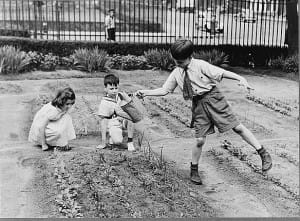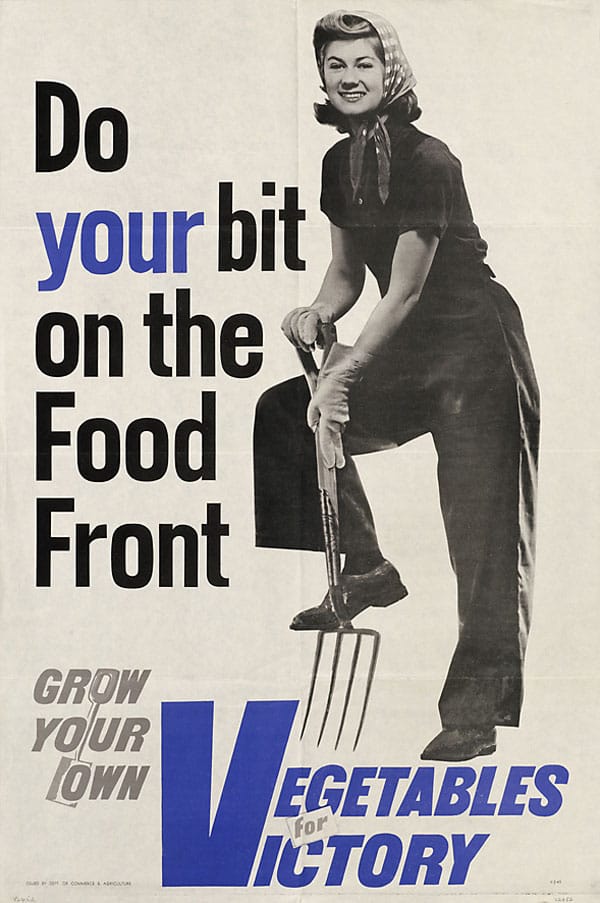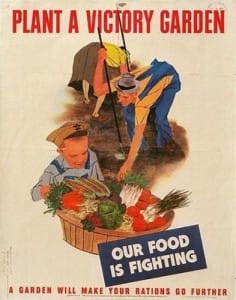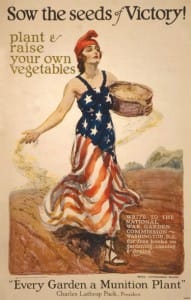Around the July 4th holiday it is fun to think about our collective American history. Gardens have always been a part of that. The Victory Garden movement during World War II is fascinating.
A shortage of farm labor developed during World War II that made it difficult to get crops harvested. Add to that the gasoline and rubber shortages which made it difficult to get the crops to the market. In response the US government started promoting Victory Gardens, encouraging people in more urban environments to grow food crops.
It is estimated that 20 million Americans did their gardening duty and produced 9-10 million tons of food. This equated to roughly half the vegetables grown in the US at that time. This initiative also freed up canned goods for the troops.
Schools even got involved creating school Victory Gardens.

Businesses jumped on board this promotion. One popular Coca-Cola advertisement stated, “There is a Victory Garden in almost every back yard this summer, growing food and vitamins for the family. The owners are so proud of their vegetables as of their specimen roses or dahlias. Friends in work clothes come over to admire and compare crops. They eat tomatoes right off the vine and crunch carrots fresh from the earth.” The advertisement goes on to say that serving Coca-Cola is the correct hospitality in a Victory Garden.
The US government encouraged Victory Gardens during World War I as well but the movement wasn’t as massive. This Department of Agriculture and Commerce promotion from that time is almost comical. Who is this woman suppose to be? Notice the expression on her face and her very toned arms. Who gardens in sandals? She is going to have alot of thinning to do if all those seeds germinate.
I would like to have a copy of the books advertised at the bottom of the poster: Write to the National War Garden Commission ~Washington, D.C. for free books on gardening, canning, and drying.
After World War II the interest in home vegetable gardening waned. It seems people were interested in peacetime activities and conveniences, including purchasing vegetables at the market.
Vegetable gardening is a large part of our American heritage. From colonial kitchens to victory/war gardens to community gardens to a garden at the White House. It is great to be a part of it.
Happy 4th of July!
- ParSLAY the Day! - June 12, 2024
- 6th Annual Great Southeast Pollinator Census - May 28, 2024
- Are you ready for Pepper Palooza? - July 5, 2023



nice job guys